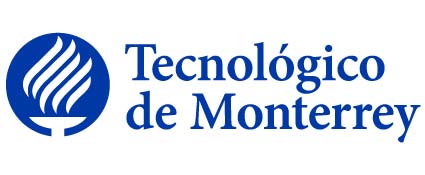
|
|||||
Disciplina asociada:Ciencias Computacionales |
|||||
Escuela:
Ingeniería y Ciencias
|
|||||
Departamento Académico:
Computación
|
|||||
Programas académicos: |
|||||
Requisitos:No tiene. |
|||||
Equivalencia:No tiene. |
|||||
Intención del curso en el contexto general del plan de estudios: |
|||||
|
Es el curso básico del Posgrado del área de Ciencias Computacionales, que tiene la intención que el alumno explique el alcance, las metas y las limitaciones del aprendizaje automático, así como las diferentes sub-disciplinas de este campo; describa las técnicas cubiertas por el curso, así como el dónde se ubican dentro de la estructura de la disciplina; compare críticamente, contraste y evalúe las técnicas de aprendizaje automático en términos de su aplicabilidad en diferentes problemas; dado un conjunto de datos y un problema, use adecuadamente un paquete computacional y aplique correctamente las técnicas cubiertas por el curso y resuelva el problema; aplicar un enfoque sistémico y sistemático para conducir investigación experimental y evaluar hipótesis científicas. El curso requiere conocimientos sólidos en programación y básicos en matemáticas discretas, cálculo, probabilidad y álgebra lineal. Como resultado del aprendizaje el estudiante obtendrá los elementos para analizar un conjunto de datos, construir modelos de aprendizaje computacional que le permitan resolver problemas, o evaluar hipótesis científicas. |
|||||
Objetivo general de la Unidad de Formación: |
|||||
| Al finalizar el curso el alumno será capaz de aplicar las principales técnicas relacionadas con el aprendizaje automático, tales como regresión, aprendizaje supervisado, no supervisado, y otros, apoyándose en un paquete computacional que le permita realizar experimentos con ellas. | |||||
Técnica didáctica sugerida: |
|||||
| No especificado | |||||
Bibliografía sugerida: |
|||||
|
LIBROS DE TEXTO: * Mitchell, Tom M. (Tom Michael), 1951-, Machine Learning / Tom M. Mitchell., , New York : McGraw-Hill, c1997., , 0070428077 LIBROS DE CONSULTA: * * Theodoridis, S. & Koutroumbas, K. , Pattern Recognition, Cuarta, Academic Press, 9781597492720 * * Smola, A., & Vishwanathan, S. V. N. , Introduction to machine learning, Cambridge University Press, 0 521 82583 0 * Duda, Richard O., Pattern classification / Richard O. Duda, Peter E. Hart [and] David G. Stork., 2nd ed., New York : Wiley, 2001., , 0471056693 (papel alcalino) * Bishop, Christopher M., Pattern recognition and machine learning / Christopher M. Bishop., , New York : Springer, c2006., , 0387310738 (encuadernado), 9780387310732 (encuadernado) |
|||||
Perfil del Profesor: |
|||||
|
(110701)Doctorado en Ciencias Computacionales CIP: 110701 |
|||||
|
|||||
Discipline:Computer Science |
|||||
School:
Engineering and Sciences
|
|||||
Academic Department:
Computing
|
|||||
Programs: |
|||||
Prerequisites:None. |
|||||
Equivalences:None. |
|||||
Course intention within the general study plan context: |
|||||
|
It is a graduate basic course of the area of Computer Science, which aims for the student to explain the scope, the goals, and the limitations of Machine Learning; understanding the different sub-disciplines in this field; describing the techniques which are covered in this course, as well as recognizing the structure of the discipline where these techniques fit in; comparing critically, contrasting and evaluating the Machine Learning techniques in terms of their applicability in different problems; given a dataset and a problem, properly using a computational package and correctly applying the techniques covered by the course, and solving problems; applying a systemic and systematic approach for conducting experimental research and evaluating scientific hypotheses. The course requires strong knowledge of computer programming and basic knowledge of discrete mathematics, calculus, probabilities, and linear algebra. As a result of the learning process the student will get the elements for analyzing a dataset, building machine learning models to solve problems, or evaluating scientific hypotheses. |
|||||
Course objective: |
|||||
| After completing the course, the student will be able to apply the main techniques related to machine learning, such as regression, supervised learning, unsupervised learning, and others; by means of a software package that allows the student to perform experiments with these techniques. | |||||
Teaching and learning tecniques: |
|||||
| Not Specified | |||||
Suggested Bibliography: |
|||||
|
TEXT BOOKS: * Mitchell, Tom M. (Tom Michael), 1951-, Machine Learning / Tom M. Mitchell., , New York : McGraw-Hill, c1997., , 0070428077 BOOKS FOR CONSULTATION: * * Theodoridis, S. & Koutroumbas, K. , Pattern Recognition, Cuarta, Academic Press, 9781597492720 * * Smola, A., & Vishwanathan, S. V. N. , Introduction to machine learning, Cambridge University Press, 0 521 82583 0 * Duda, Richard O., Pattern classification / Richard O. Duda, Peter E. Hart [and] David G. Stork., 2nd ed., New York : Wiley, 2001., , 0471056693 (papel alcalino) * Bishop, Christopher M., Pattern recognition and machine learning / Christopher M. Bishop., , New York : Springer, c2006., , 0387310738 (encuadernado), 9780387310732 (encuadernado) |
|||||
Academic credentials required to teach the course: |
|||||
|
(110701)Doctoral Degree in Computational Sciences CIP: 110701 |
|||||